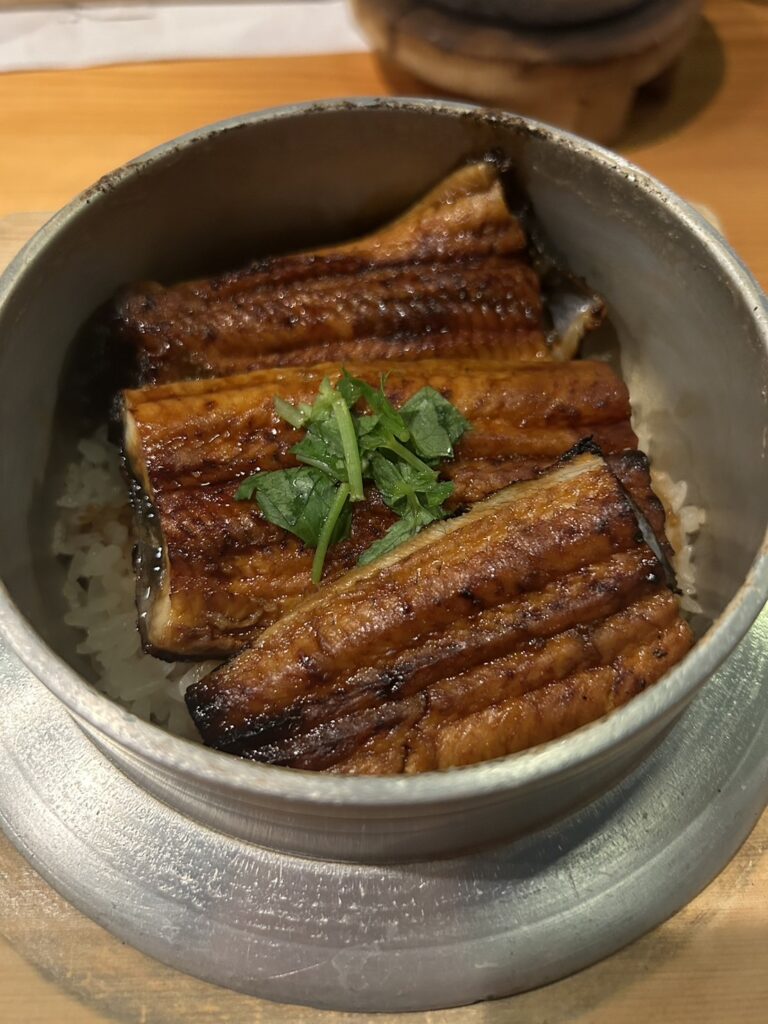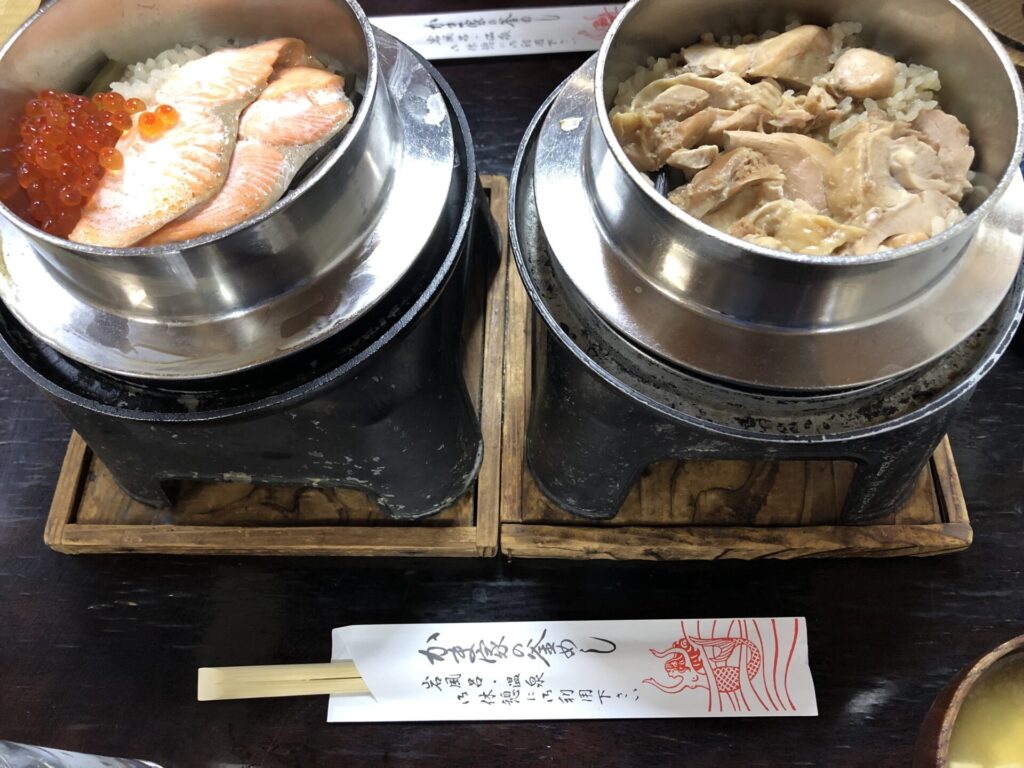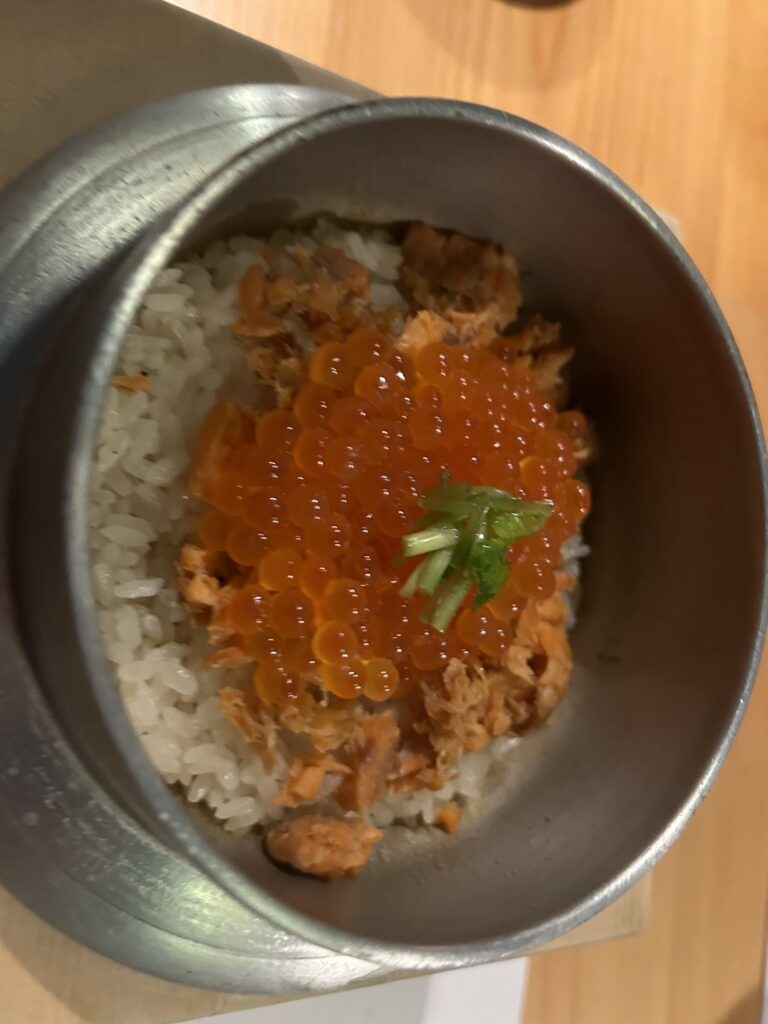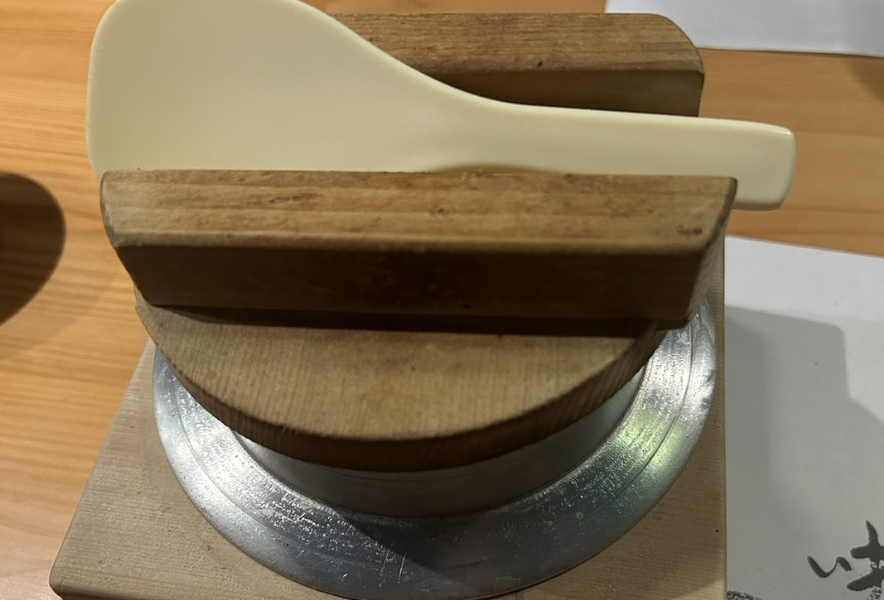Contents
What is Kamameshi?

Kamameshi (釜飯), literally meaning “kettle rice,” is a traditional Japanese dish cooked and served in an iron pot known as a “kama.” This cooking method gives the rice a unique texture and flavor, making it distinct from other Japanese rice dishes.
The History of Kamameshi
Kamameshi has its roots in the Taisho period (1912-1926) when it was popularized as a way to prepare a nutritious and flavorful meal using a single pot. Originally, it was a practical dish cooked over an open fire, allowing the rice to absorb the flavors of the ingredients as it simmered. Today, kamameshi has evolved into a beloved dish enjoyed in homes and restaurants across Japan.
How Kamameshi is Made

The preparation of kamameshi involves a few key steps:
- The Base:
- The main ingredient is rice, which is washed and soaked to ensure it cooks evenly.
- The Broth:
- The rice is cooked in a flavorful broth made from dashi (a Japanese stock), soy sauce, mirin (sweet rice wine), and sometimes sake. This imparts a rich umami flavor to the rice.
- The Ingredients:
- Various ingredients such as chicken, seafood, vegetables, and mushrooms are added to the rice. These ingredients vary by region and season, allowing for endless variations of kamameshi.
- The Cooking:
- The rice and ingredients are placed in a kama and cooked over a flame. As the rice cooks, it absorbs the flavors of the broth and ingredients, creating a harmonious blend of tastes.
- The Finish:
- Once cooked, the rice at the bottom of the pot forms a crispy, caramelized layer called “okoge,” which adds an additional texture to the dish.
Varieties of Kamameshi

Kamameshi can be customized with a wide range of ingredients. Here are a few popular variations:
- Tori Kamameshi:
- Made with chicken, bamboo shoots, and carrots, this is a comforting and hearty version.
- Kaisen Kamameshi:
- Featuring an assortment of seafood like shrimp, scallops, and crab, this version is perfect for seafood lovers.
- Vegetable Kamameshi:
- A vegetarian option that includes seasonal vegetables, mushrooms, and tofu.
- Matsutake Kamameshi:
- Made with matsutake mushrooms, a delicacy in Japan, offering a distinct and aromatic flavor.
Where to Enjoy Kamameshi

Kamameshi is widely available across Japan, from specialized restaurants to local eateries. Here are a few places where you can savor this delicious dish:
- Traditional Kamameshi Restaurants:
- These restaurants focus solely on kamameshi, offering a variety of flavors and ingredients. The ambiance is often traditional, providing an authentic dining experience.
- Izayakas (Japanese Pubs):
- Kamameshi is a popular dish at izakayas, where you can enjoy it alongside other small plates and drinks.
Conclusion
Kamameshi is more than just a meal; it’s an experience that reflects the artistry and tradition of Japanese cuisine. Whether you’re dining out or cooking at home, this versatile and flavorful dish is sure to delight your taste buds and offer a deeper appreciation for Japanese culture. So, next time you’re in Japan, or if you have the chance to make it yourself, don’t miss the opportunity to enjoy the delicious charm of kamameshi.
Let’s go to Izakaya and a Japanese Snack-bar with a fun guide!!
You can enjoy many kinds of food at Izakaya and drinking culture Snack Bars, beloved by many but you can’t enter without a guide. You can enjoy communication with the owner and other customers, as well as singing karaoke, allowing for a relaxing time.
Most snack bars have a policy of refusing entry to foreigners. However, with a tour, you’ll have a guide, so you can enter with peace of mind.
When visiting Japan, don’t just check off the tourist spots –
dive into local experiences for an unforgettable journey!

Once you experience it, you’ll be captivated too! The charm of snack bars.

New encounters with people! The camaraderie of singing at a snack bar! Conversations with the mama-san!





